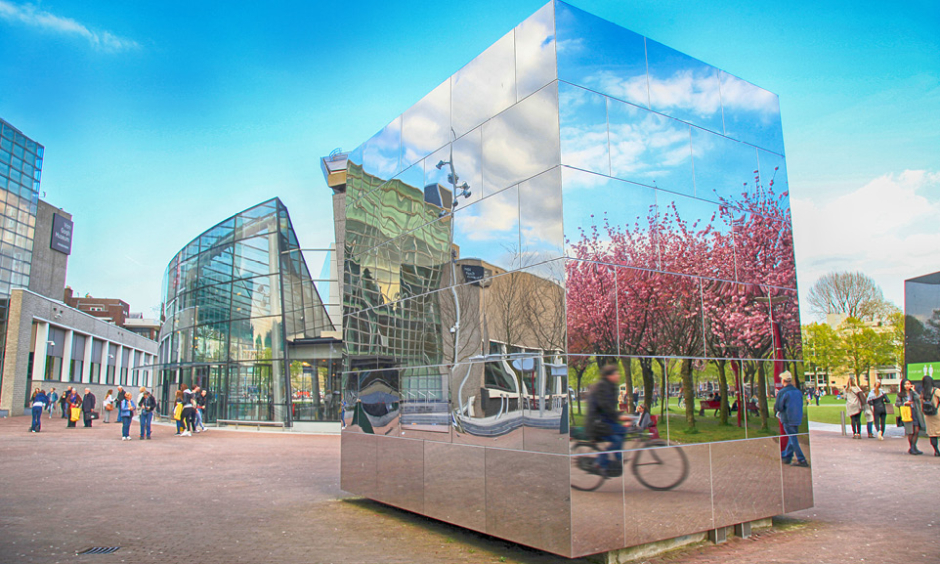Written by James Coker | Reporter, European Medical Journal | @EMJJamesCoker
![]()
From 13th–16th June, thousands of individuals will arrive in Amsterdam, Netherlands, for the 2018 edition of the EULAR Annual Congress of Rheumatology, the 19th year of the current incarnation of this event. The aim, as always, is to educate healthcare professionals in the field about the latest research and innovative techniques for diagnosing and treating the complete range of bone and joint-related ailments. The event will also provide a forum for the exchange of ideas and start of new collaborations between medical doctors, researchers, other health professionals, patients, and the pharmaceutical industry from all over the world. The EMJ team will be present at the RAI Amsterdam Convention Centre to observe the most pertinent findings and discussions that take place before preparing our subsequent review in the upcoming edition of the EMJ Rheumatology eJournal, due to be published in July. This will be free to access on our website; click here to subscribe to our rheumatology content to make sure you receive instant news of the publication!
History of the Congress
The first EULAR congress in its current form took place in Nice, France, in the year 2000, where there were 6,400 participants. The popularity of the event has increased enormously since that time, with year-on-year averages of attendees steadily increasing ever since, and a current peak of 16,106 at the 2011 congress in London, UK. The last time Amsterdam hosted the congress was in 2006, from 21st–24th June, and this was attended by 11,045 people.1
Last Time Out
The 2017 Annual EULAR Congress took place in a very sunny Madrid, Spain, from 14th–17th June, and was attended by 14,308 individuals from the field of rheumatology. This event was particularly special as it celebrated a momentous occasion: the 70th anniversary since the EULAR society was created back in 1947. Amongst a plethora of new and inciteful studies that were presented, there were important data about the use of two new drug classes for the treatment of psoriatic arthritis (PsA); research testing whether Acceptance and Commitment Therapy (ACT) could improve depression and anxiety symptoms in chronic pain patients; and the discovery of a biomarker in lupus patients which could show if there was an increased risk of cardiovascular disease by predicting the presence of plaques. This is a mere taster of what we reported in our review of the event in last year’s EMJ Rheumatology journal, which can be read in full here.
Important Timings
On Day 1 of the event, Wednesday 13th June, there will be two official events to kick the congress off in fine style: the Opening plenary session, from 13.00–14.00, and the Networking platform, taking place from 20.00–22.00. The Congress Dinner, always a highlight, promises to be a fantastic evening as usual, with a unique opportunity to network and catch-up with likeminded colleagues from all over the world in a relaxed environment. This year’s dinner will be held on a cruise ship, named the Oceandiva, providing attendees with spectacular views of Amsterdam harbour! This unmissable event is scheduled for Friday 15th June from 20.30 until midnight.
Specific times have been allocated for poster tours and poster viewing on the 13th (11.45–13.30), 14th (11.45–13.30), and 15th June (10.30–12.00). The exhibition area, where the latest products and devices will be displayed by pharmaceutical companies and manufacturers, will be open on each of the 4 days, from 12.00–18.00 on 13th June, 08.00–17.15 on 14th June, 08.00–17.15 on 15th June, and finally, 08.45–14.00 on 16th June.2
Hot Topics
The research areas covered in the event have been broken down into the following categories: Genomics, genetic basis of disease, and antigen presentation; Adaptive immunity (T cells and B cells) in rheumatic diseases; Innate immunity in rheumatic diseases; Cytokines and inflammatory mediators; Cartilage, synovium, and bone; Rheumatoid arthritis – aetiology, pathogenesis, and animal models; Spondyloarthritis – aetiology, pathogenesis and animal models; SLE, Sjögren’s, and APS – aetiology, pathogenesis, and animal models; and Systemic sclerosis, myositis, and related syndromes – aetiology, pathogenesis, and animal models. These will incorporate every type of rheumatic disease there is, ensuring the programme provides vital insights for professionals from each specialism.3
Social Media
As always, social media will play a huge role in the dissemination of information shared during the event. For official updates, follow the EULAR twitter account: @eular_org and check the EULAR Facebook page here: https://www.facebook.com/eular.org/.
With members of the EMJ team in attendance, keep an eye on what we get up to on our accounts of @EMJReviews and @EMJRheum, and tweet us your thoughts using the congress hashtag: #EULAR2018.
History of the City
From its beginnings during the 13th century as a fishing village, Amsterdam rapidly grew economically and in population size, enjoying its heyday of commercial success during the Dutch Golden Age of the 17th century. This was the period in which Amsterdam’s urban expansions brought about its now characteristic appearance. Following a period of recession and decline for the Dutch state caused largely by conflict, the city enjoyed a New Golden Age of expansion from the end of the Napoleonic Wars to the start of World War 2. From 1940–45 Amsterdam was occupied by Nazi Germany and is of course the place where Anne Frank was forced into hiding and wrote her experiences in her famous diaries. Since that time, the city has become highly prosperous and is widely considered to be one of the most liberal places in the world.4
Places to Visit
There is certainly no shortage of things to do during your stay in the city, and here are three you may wish to consider:
Anne Frank Museum: Visitors have the opportunity to experience a major piece of history: the very place where Anne Frank went into hiding and wrote her diaries from 1942–44.5
Van Gogh Museum: For art lovers, there is the opportunity to surround yourself with the world’s largest collection of Vincent Van Gogh works.6
Canal Tours: With 165 different canals, a trip to Amsterdam cannot be complete without a tour of these canals, which define the city’s landscape and have played a major role in its history.7
This edition of EULAR’s Annual Congress of Rheumatology promises to once again be a seminal event in the calendars of professionals from rheumatology and associated fields. The EMJ team will be on hand to take note and interact with the exciting presentations and discussions that take place ahead of our subsequent review in July. Come and say hello if you see us around!
REFERENCES
- EULAR. EULAR 2006. Available at: http://www.congress.eular.org/congress_2006.cfm. Last accessed: 21 May 2018.
- EULAR Amsterdam 2018. Time schedule. Available at: http://www.congress.eular.org/time_schedule.cfm. Last accessed: 21 May 2018.
- EULAR Amsterdam 2018. Abstract topics. Available at: http://www.congress.eular.org/abstract_topics.cfm. Last accessed: 21 May 2018.
- Amsterdam.info. History of Amsterdam. Available at: https://www.amsterdam.info/basics/history/. Last accessed: 21 May 2018.
- Anne Frank. Museum: Anne Frank House, a museum with a story. Available at: http://www.annefrank.org/en/Museum/. Last accessed: 21 May 2018.
- Van Gogh Museum Amsterdam. Available at: https://www.vangoghmuseum.nl/en. Last accessed: 21 May 2018.
- I Amsterdam. Canal cruising: On the water in Amsterdam. Available at: https://www.iamsterdam.com/en/see-and-do/things-to-do/canal-cruising. Last accessed: 21 May 2018.








